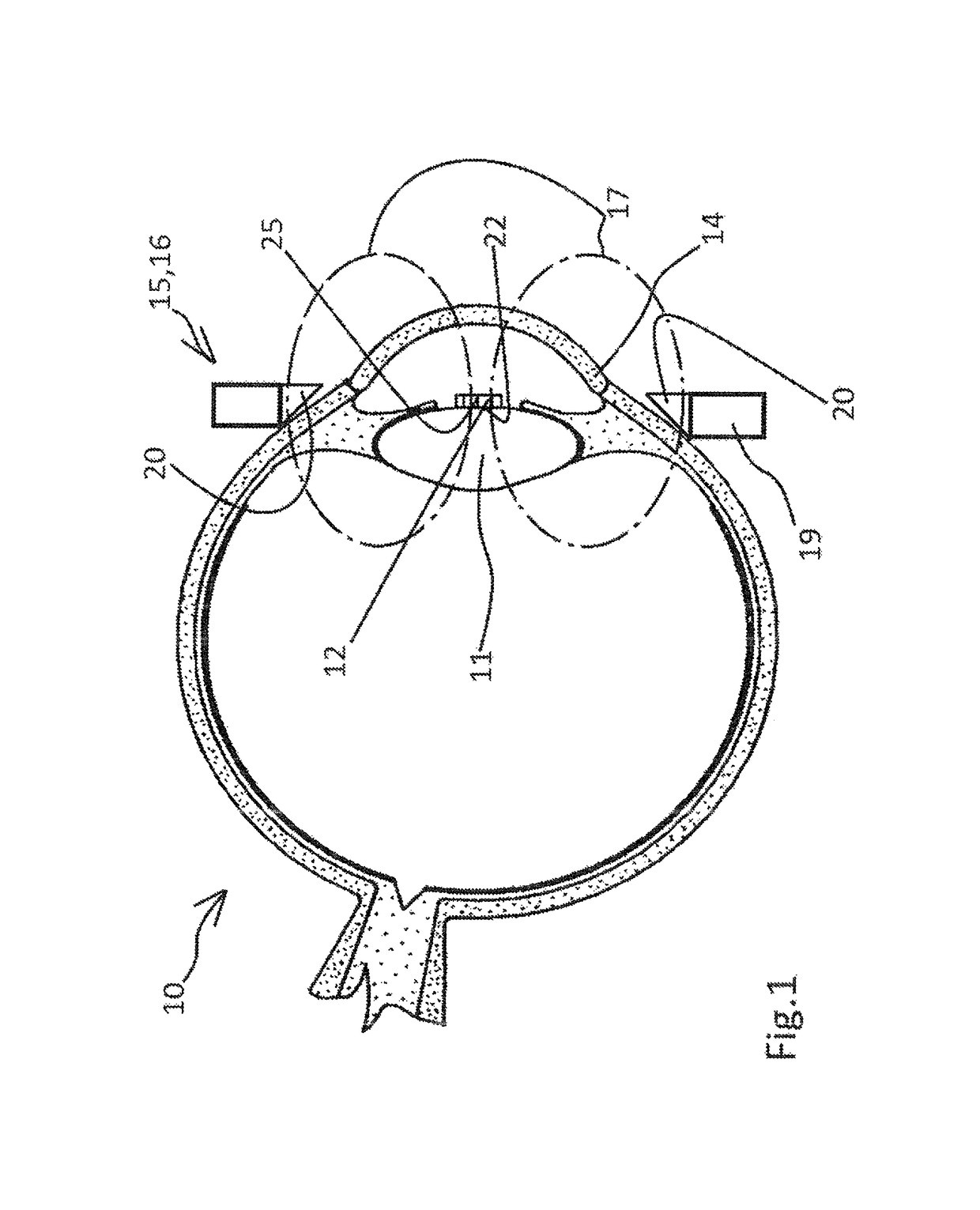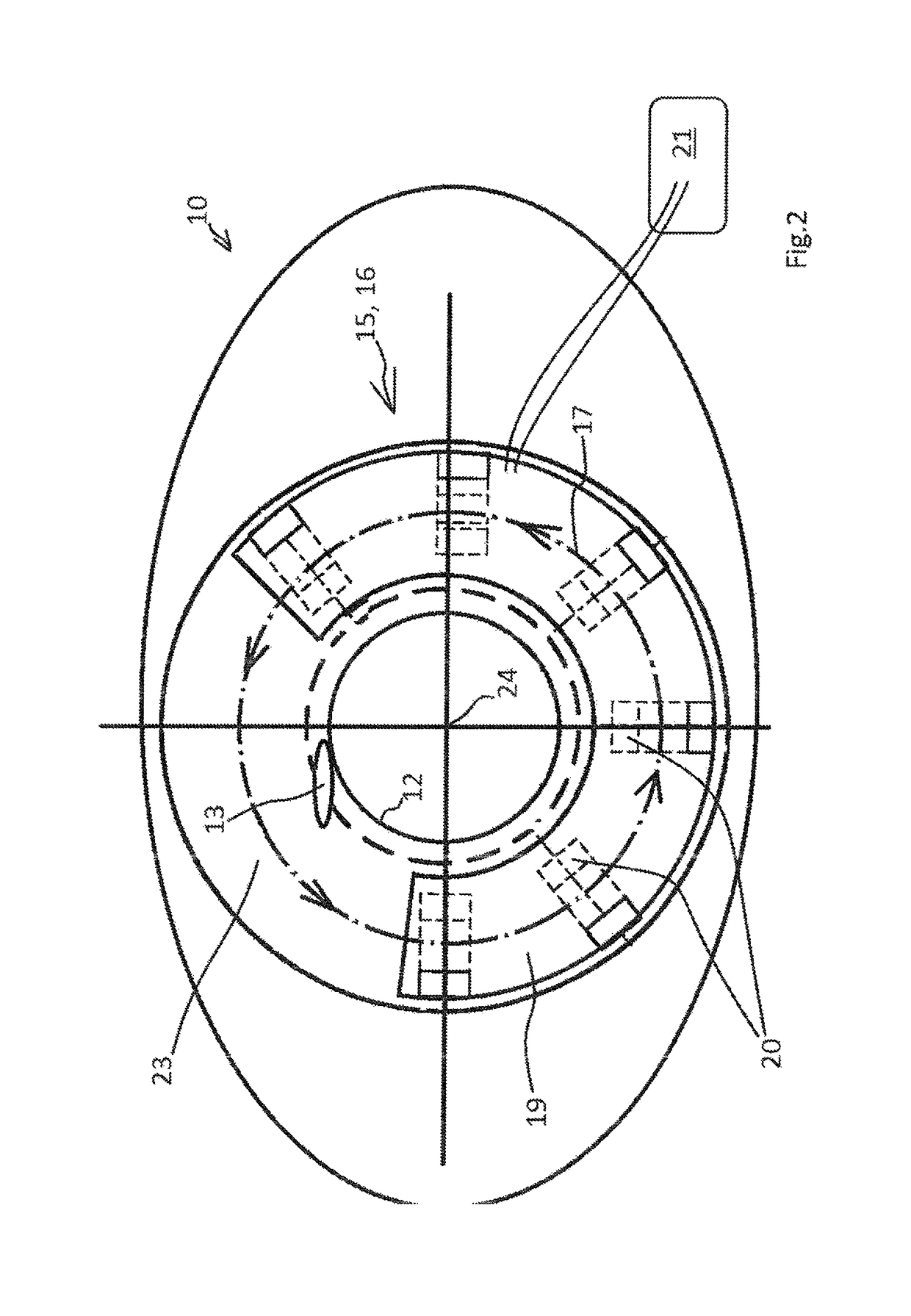Device for producing cuts or perforations on an eye
a technology for producing eye cuts and perforations, applied in the field of eye cuts or perforations, can solve the problems of affecting vision, affecting the ability of the eye to heal, and affecting the effect of vision,
- Summary
- Abstract
- Description
- Claims
- Application Information
AI Technical Summary
Benefits of technology
Problems solved by technology
Method used
Image
Examples
first embodiment
[0041]Referring now to the drawings wherein the showings are for the purpose of illustrating preferred and alternative embodiments of the invention only and not for the purpose of limiting the same, FIGS. 1 and 2 show a device according to the invention used for producing a rhexis, in other words a circular cut in the eye 10 for opening the eye lens 11. The device includes here a cutting element 12, which by means of a small incision 13 in the cornea 14 of the eye 10 to be operated on can be introduced into the interior of the eye. The cutting element can be elastically deformable for this, so as to permit to be introduced, similar to an intraocular lens, into the interior of the eye through the comparatively small cut 13 using methods familiar to the eye surgeon. The cutting element is magnetisable or magnetic, for which purpose it is either completely made of metal with ferromagnetic properties, or has a metallic coating, a ferromagnetic core or a bracing made of (ferromagnetic) m...
second embodiment
[0046]The second embodiment illustrated in FIG. 3 differs from the embodiments in FIGS. 1 and 2 mainly in that the field generator for generating the electromagnetic field is not arranged here in the immediate vicinity of the cutting element directly at the eye of the patient to be operated upon, but on an item of equipment that surrounds the entire head of the patient at a greater distance from the cutting element. The exciter magnets here are arranged on magnet holders 26, of which there are several, preferably arranged at even angular distances, surrounding the head of patient at the height of eye to be operated upon. It can be seen in the embodiment shown in FIG. 3 that the operating table 27 with the patient lying on it can be moved sideways so as to adjust the eye to the optimal position relative to the magnet holders 26.
[0047]FIGS. 4 and 5 show and alternative design of a cutting element used in the invention. In this embodiment, the cutting element 12 has two cloverleaf-shap...
PUM
 Login to View More
Login to View More Abstract
Description
Claims
Application Information
 Login to View More
Login to View More - R&D
- Intellectual Property
- Life Sciences
- Materials
- Tech Scout
- Unparalleled Data Quality
- Higher Quality Content
- 60% Fewer Hallucinations
Browse by: Latest US Patents, China's latest patents, Technical Efficacy Thesaurus, Application Domain, Technology Topic, Popular Technical Reports.
© 2025 PatSnap. All rights reserved.Legal|Privacy policy|Modern Slavery Act Transparency Statement|Sitemap|About US| Contact US: help@patsnap.com



